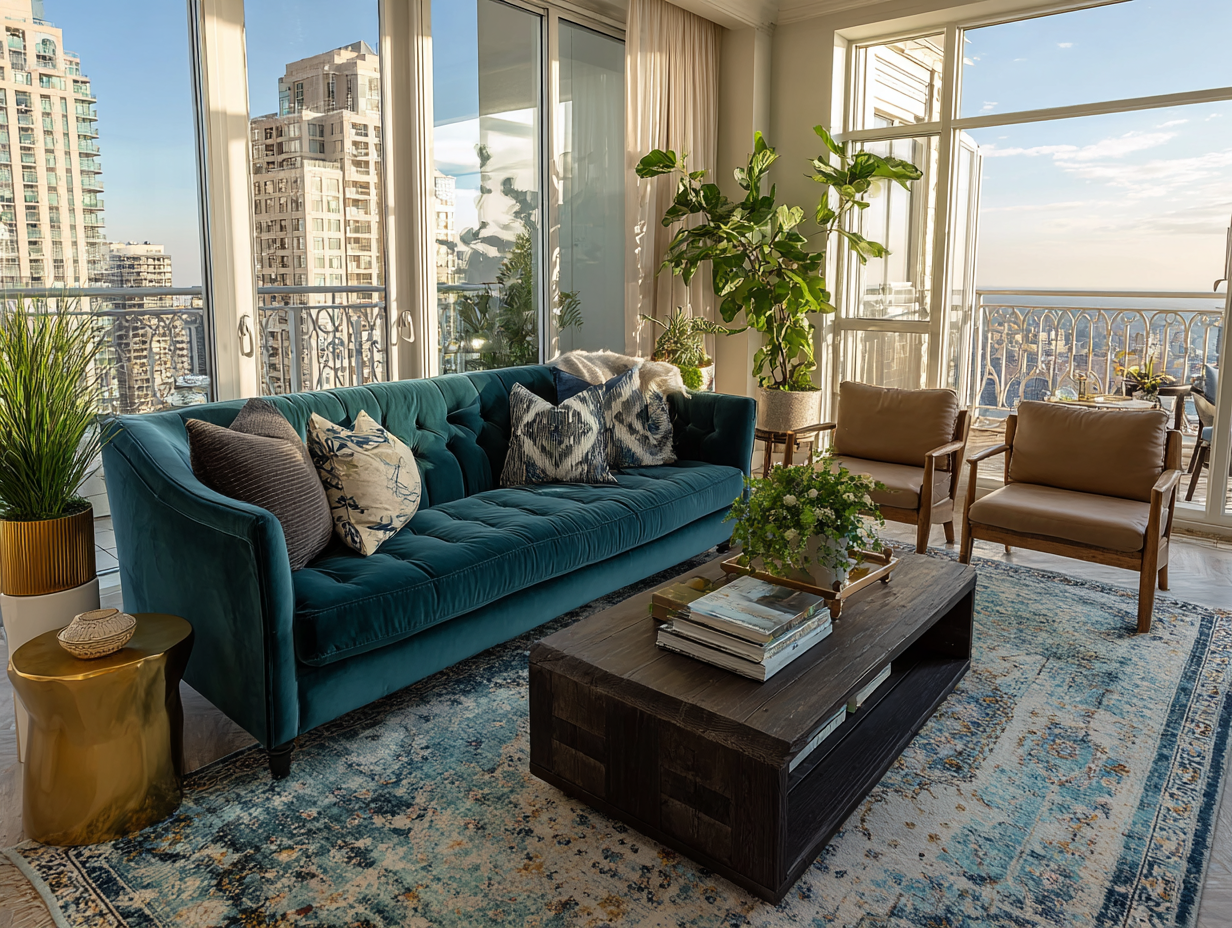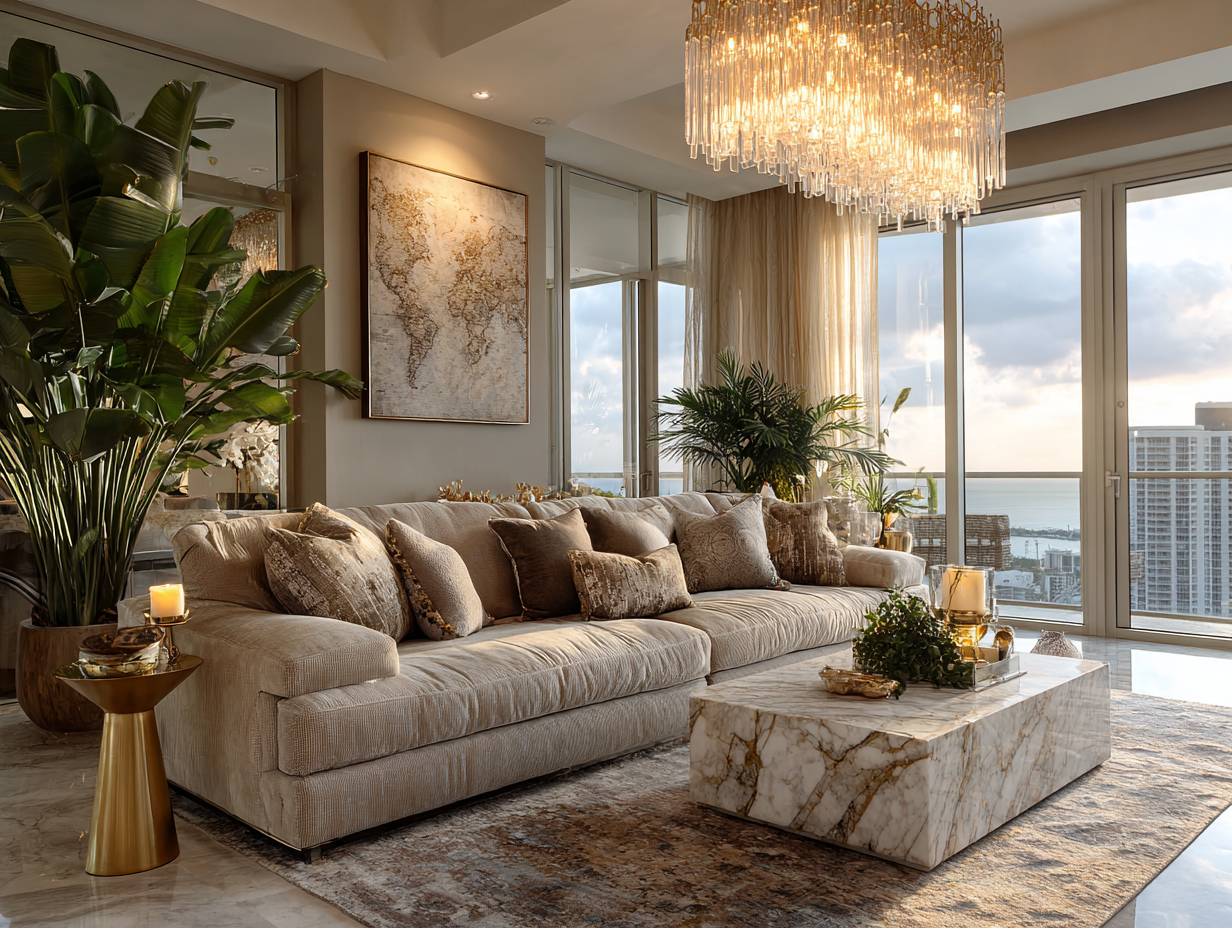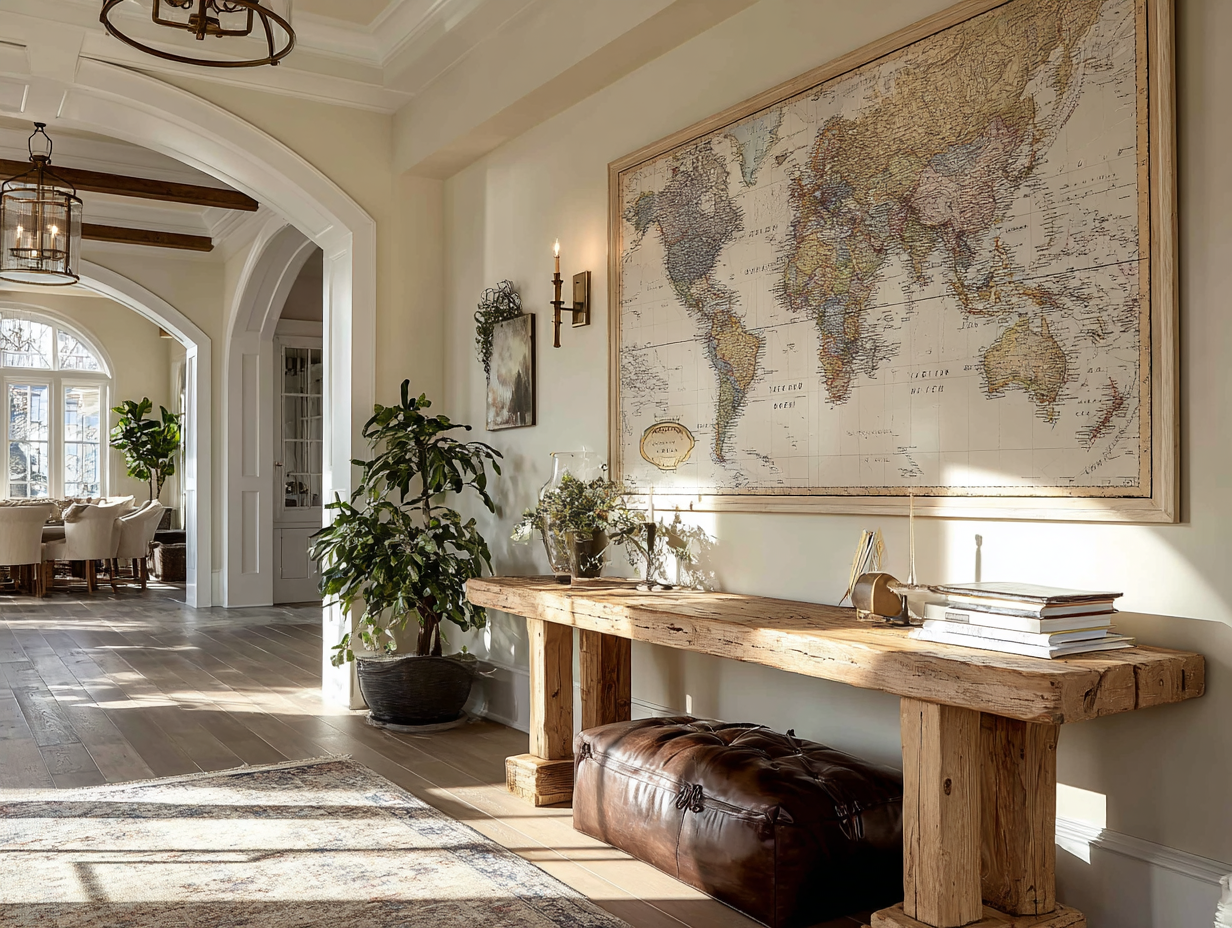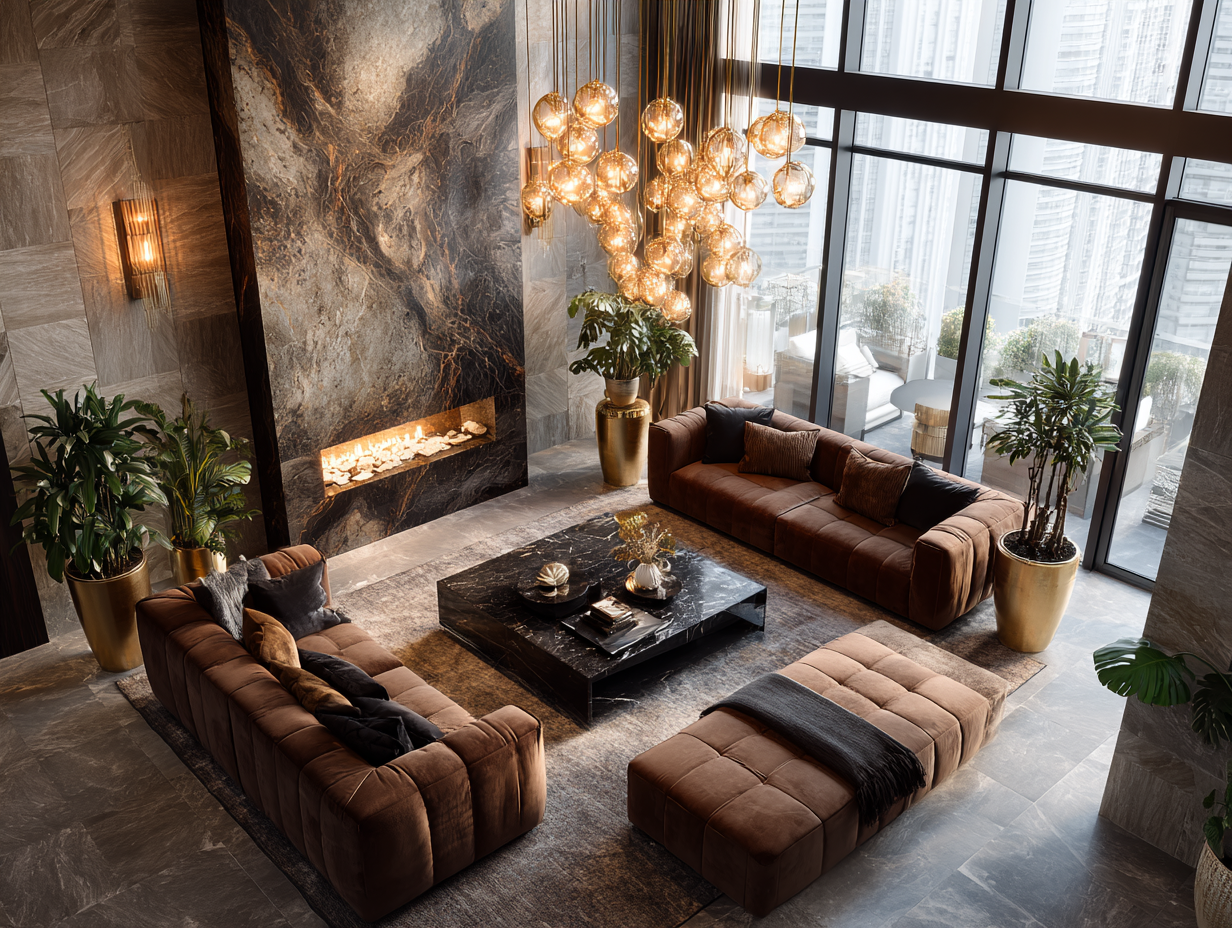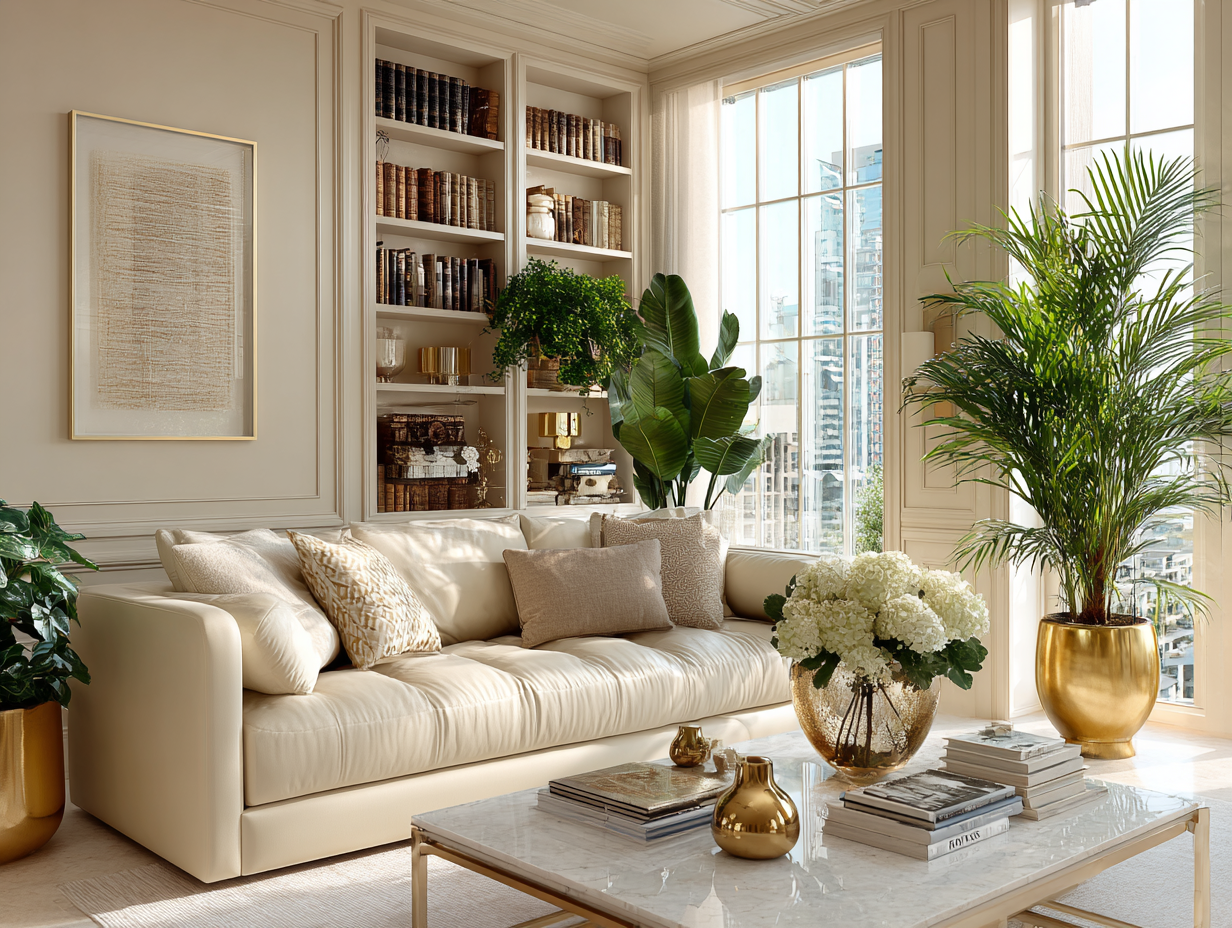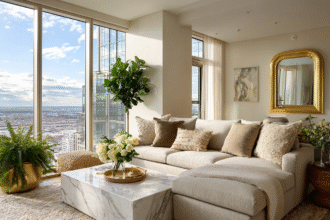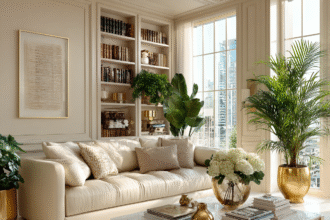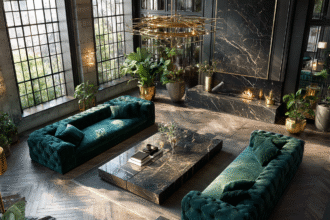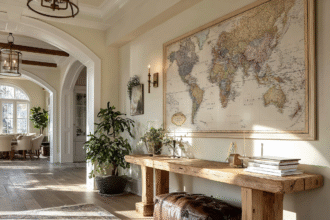The Elegant Guide to Vertical Living: Thriving in Condos, Penthouses, and High-Rise Apartments
From Wide Horizons to Vertical Heights
When I was 27, I bought my first dream home — a sprawling house with everything I thought I wanted. A large swimming pool in the backyard, a gym in the basement, a dining room with French doors with a view of the swimming pool and gorgeous outdoor stairs, and a playroom big enough to fit a beautiful pool table and a home bar. I lived that life for a decade, the house, the yard, the endless square footage.
And then I let it go.
When my son started high school, I moved closer to his school, as I knew he would be attending it for the next 7 to 10 years. Instead of being tied to a large home with constant upkeep, I moved closer to his school into a condo. Suddenly, the space around me was smaller, but the life above me was bigger. A rooftop pool replaced my backyard one. A gym situated on a high floor provided me with views that no basement treadmill could ever compete with. And for the first time, I understood what it means to live vertically.
This guide is not just about condos, penthouses, or high-rise apartments. It’s about a lifestyle shift that is quietly reshaping the way we live, in every major city in the world.
What Is Vertical Living?
Vertical living is, quite literally, living upward instead of outward. Instead of spreading out across expansive land with houses, yards, and suburban sprawl, we live in stacked homes: condos, penthouses, and apartments that rise into the sky.
In New York, Hong Kong, Dubai, and Shanghai, vertical living is the only viable option for cities to accommodate millions of residents. But it’s not only about density. It’s about design, efficiency, and creating communities within a single building.
Today, high-rise living offers more than just four walls stacked on top of each other. It’s a lifestyle ecosystem — gyms, rooftop gardens, cafes, co-working spaces, even entire wellness floors built right into the structure.
Vertical living is no longer a compromise. It’s a choice.
My Journey: House Living vs. Condo Living
Having lived both, I can tell you: the difference isn’t good versus bad. It’s personal.

In my house, I loved the luxury of space — the kitchen where I could cook freely, the pool where summer days stretched endlessly, and the ability to host and entertain. But with that came maintenance: cleaning, repairs, yard work, endless small tasks that demanded attention. That home was beautiful, but it was too large, more than I needed, and it required constant care.
In my condo, my lifestyle shifted. I don’t need to shovel snow or worry about the pool filter. Instead, I swim in a rooftop pool with the city stretched out around me. I work out in a high-rise gym where trees and skyline blend into one view. My space is smaller, yes, but it’s intentional. Every piece of furniture, every decorative choice, has a purpose.
I now have exactly what I need: a perfect living room, a bedroom with a walk-in closet, a cozy balcony where I can sit and unwind, and a separate room that I’ve shaped with intention. I sometimes wish for kitchen windows, but beyond that, my home fits my life perfectly.
And the most significant gift? The view.
In Canada, winters can be isolating — with temperatures as low as minus 20 degrees outside, snow piling against windows. But in a condo, you’re never cut off. Even in the coldest months, the view connects you to energy, light, and life happening below. That alone shifts your mindset.
Travel and Inspiration: Lessons From Global Cities
My first proper exposure to vertical living came during my travels as a fashion designer. Business often took me to Hong Kong, Shanghai, New York, and other cities where high-rise living was not an option but a way of life.
I remember driving across Hong Kong for nearly an hour, and the skyline never stopped. Tower after tower, each filled with families, professionals, and communities. In Shanghai, the scale was just as immense — skyscrapers lined the horizon in every direction.
But what struck me most wasn’t the scale. It was the interiors.
Every time I visited a supplier, a friend, or even a colleague in these cities, I noticed how beautifully small spaces were decorated. A compact balcony transformed into an oasis with a velvet sofa, string lights, and potted plants. A living room enhanced with a single oversized painting instantly creates a sense of volume. A small bedroom designed around a walk-in closet that was curated with care.
These homes were elegant, not because they were large, but because they were intentional. At the time, I was living in a sprawling house that I constantly tried to maintain. It was eye-opening to see how a small space could feel more luxurious, complete, and alive than a large one.
Those experiences stayed with me. They taught me that scale doesn’t define beauty. Intention does.
The New York Apartment: An Icon of Vertical Style
If there’s one place where vertical living has become a global design subject, it’s New York.
New York apartments are famous not only for their location but for the lifestyle they represent. From historic brownstone walk-ups in the West Village to sleek glass penthouses overlooking Central Park, these spaces are constantly studied, photographed, and reimagined in magazines and films. I love flipping through this New York apartments coffee table book for inspiration.
They are small in square footage, but have a glamorous impact. Think of exposed brick walls paired with designer furniture, loft-style ceilings with modern lighting, or oversized art pieces that transform a modest living room into a statement. Even the smallest studio can be elevated with luxury finishes, curated textiles, and architectural details that give it the feel of a designer showroom.
New York apartments remind us that vertical living doesn’t limit style, it amplifies it. In fact, much of the global “small space luxury” movement in decor takes its cues from Manhattan, where residents have perfected the art of making less space feel like more.
Why Vertical Living Is on the Rise
The growth of vertical living isn’t random. It’s global.
- Population Density: Cities like Hong Kong, Shanghai, and New York can’t expand outward — so they rise upward.
- Urban Lifestyle: People are increasingly choosing proximity to work, schools, restaurants, and cultural attractions over commuting from the suburbs.
- Amenities Built-In: Instead of driving to the gym, residents take an elevator. Instead of traveling to a park, they step into a rooftop garden.
- Sustainability: Vertical living reduces land sprawl, supports shared resources, and encourages energy-efficient designs.
Except in regions like California, where sprawling homes and a car-centric culture remain deeply ingrained, most modern urban centers are embracing high-rise living as the standard for future growth. From Asia to Europe to North America, the skyline is becoming the new neighborhood.
The Benefits of Vertical Living
1. Amenities as Extensions of Home
From pools to co-working lounges, the building itself becomes part of your home. You don’t just own or rent a unit, you share a lifestyle.
2. Views That Expand Your Mindset
There is something transformative about walking out onto your balcony and watching the city come alive as the sunrise breaks. Views offer energy and perspective that a backyard can’t always provide. I have experienced both.
3. Reduced Maintenance, Increased Freedom
When you live in a condo, you live lighter. No pool to clean, no snow to shovel, no roof repairs to schedule. That time and energy can be spent on things you like to do but never had the time for – for me, it was mostly reading more books and building my publishing business.
4. Designed Living
Smaller square footage encourages intentional design. Multi-functional furniture, curated decor, and fewer but higher-quality possessions make your space more elegant.
The Challenges of Vertical Living
Every lifestyle comes with its own set of challenges, and vertical living is no exception.
- Smaller Space: Downsizing requires thoughtful curation and letting go of clutter. Do I need two extra bedrooms and 4 sets of dinner plates for entertaining?
- Shared Walls: Privacy may require mindfulness, especially in buildings with a high concentration of families.
- Dependence on Elevators: Unlike walking into a house, high-rise living means waiting for lifts — a minor but daily adjustment.
But here’s the truth: these challenges often lead to growth. Less space leads to more intentional living. Shared amenities foster community. And design limitations inspire creativity.
If you have young children and a big family, a big house with open doors may still be the best choice.
The Future of Vertical Living
If today’s condos include gyms and rooftop pools, tomorrow’s will consist of much more. Urban developers already imagine high-rises as vertical cities.
- Vertical Gardening: Buildings where residents grow their own food in sky-level gardens.
- Integrated Cafes & Co-Working Hubs: Not just amenities, but micro-communities built into the structure.
- Sustainability First: Solar panels, wind turbines, and green roofs to reduce carbon footprints.
- Wellness Architecture: Air-filtration, light-optimization, and soundproofing designed for health.
Future cities will rise higher not only out of necessity but out of vision — building upward means building smarter, greener, and more connected.
A Mindset Shift: Thriving in Vertical Living
Living in a house is about expansion. Living in a condo is about elevation.
When I first downsized, I thought I might miss the space. Instead, I gained clarity. I learned to design intentionally, to embrace views as energy, and to experience community in new ways.
Vertical living isn’t just about real estate. It’s about how you choose to live. Do you want freedom from maintenance? Do you want to feel connected to the city even on the coldest winter days? Do you want amenities that blend wellness into your daily life?
For many, the answer is yes.
Conclusion: The Elegant Future Is Vertical
From Hong Kong’s endless skyline to New York’s iconic apartments to the rooftop pool I swim in every week, vertical living is more than a global trend. It’s the future of how we will inhabit cities.
It’s elegant. It’s efficient. It’s intentional.
Whether you choose a condo, a penthouse, or a high-rise apartment, thriving in vertical living comes down to one thing: embracing the height of lifestyle, not just the height of the building.

